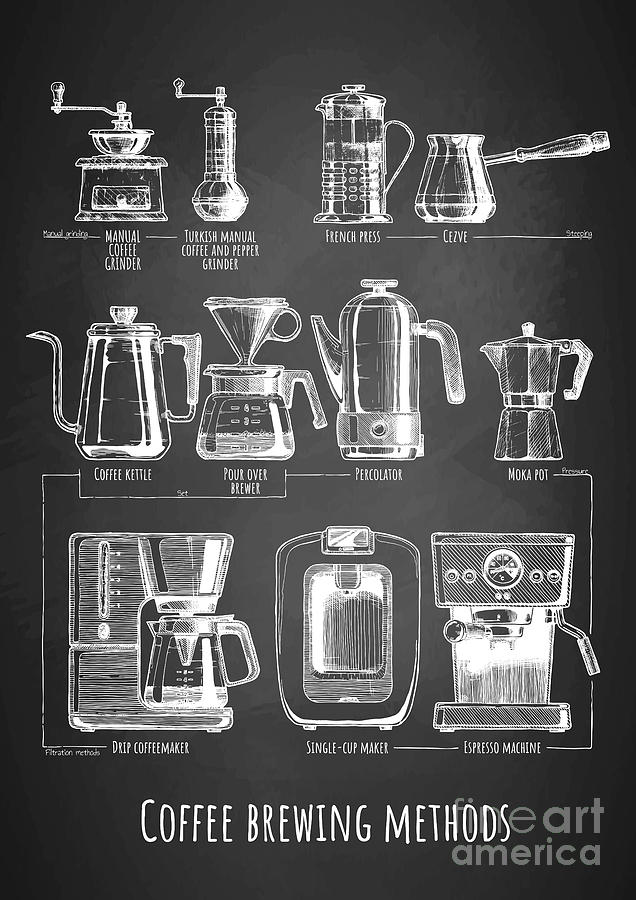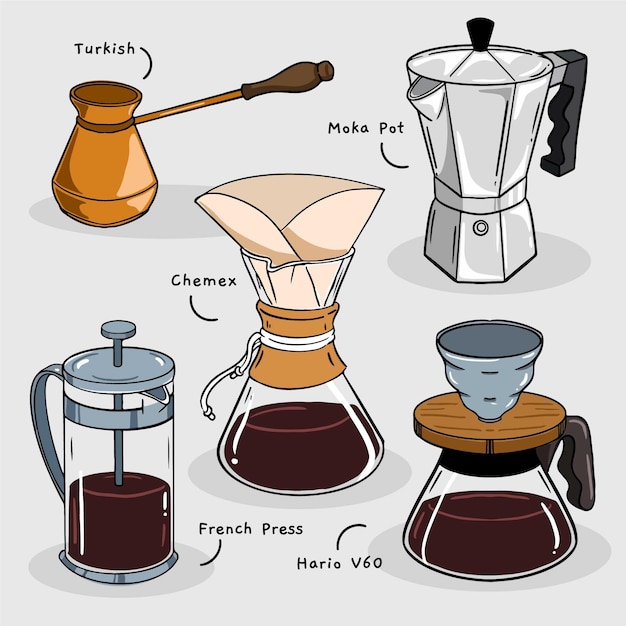The Scientific Research Behind Coffee Brewing: Exactly How Temperature Level and Time Affect Your Drink
Comprehending the scientific research behind coffee brewing discloses that temperature level and time are not plain variables yet pivotal aspects that dictate the drink's flavor profile and total top quality. The optimum developing temperature generally drops in between 195 ° F and 205 ° F, while the period of removal varies dramatically across various techniques. This interplay of aspects can cause a mug that is either unsatisfactory or delightful. As we check out the nuances of these elements, the question arises: exactly how can one successfully equilibrium temperature and time to attain that perfect brew?
The Chemistry of Coffee Extraction
The chemistry of coffee removal looks into the intricate procedures that transform raw coffee beans into the aromatic drink taken pleasure in worldwide. This transformation largely includes the solubility of various substances present in the beans, which are affected by factors such as grind dimension, water top quality, and the brewing technique utilized.
During the developing process, warm water works as a solvent, drawing out soluble substances, consisting of high levels of caffeine, sugars, acids, and lipids, from the coffee premises. Each substance adds to the taste profile, fragrance, and body of the last beverage. As an example, acids are liable for tangy and bright notes, while oils add to an abundant mouthfeel.
The initial stages of brewing remove acids and sugars, leading to a positive acidity, while long term extraction can lead to resentment due to over-extraction of unfavorable substances. Understanding these chemical communications is crucial for enhancing brewing strategies, as the balance between removal time and water temperature level can dramatically influence the general top quality of the coffee.
Ideal Brewing Temperatures
Finding the ideal developing temperature is crucial for unlocking the full potential of coffee tastes and fragrances - coffee brewing methods. Research indicates that the optimal array for brewing coffee lies between 195 ° F to 205 ° F(90 ° C to 96 ° C) Within this range, the extraction procedure successfully dissolves the desirable soluble substances in coffee beans, leading to a flavorful and well balanced mug
Developing at lower temperatures, such as below 195 ° F(90 ° C ), might cause under-extraction, generating a weak and acidic brew with low-key flavors. Alternatively, developing at temperatures going beyond 205 ° F(96 ° C) can result in over-extraction, creating a bitter and rough taste because of the too much dissolution of unwanted compounds, such as tannins.
Furthermore, the suitable brewing temperature can vary depending upon the coffee bean type and roast level. As an example, lighter roasts typically profit from somewhat greater temperatures to boost their intricate flavor profiles, while darker roasts may be better suited to reduced temperatures to alleviate anger.
Inevitably, preserving precision in developing temperatures is crucial for attaining a harmonious equilibrium of tastes, making sure that every cup of coffee provides a gratifying sensory experience.
Influence of Brewing Time
Developing time plays a pivotal role in establishing the flavor account and total high quality of coffee. Shorter brewing times can result in under-extraction, leading to a sour or weak flavor, as not enough soluble compounds are liquified.
Optimal developing time varies depending upon the approach used and the grind dimension of the coffee. As an example, a French press generally calls for regarding 4 mins, while coffee extraction is usually completed within 25 to 30 seconds. It is essential to calibrate brewing time in conjunction with other variables, such as water temperature and coffee-to-water ratio, to achieve the wanted flavor profile.
Understanding the influence of developing time allows coffee lovers to improve their developing methods, eventually boosting the sensory experience of their cup (coffee brewing methods). With cautious focus to this variable, one can unlock the complete possibility of the coffee, exposing its special characteristics and nuances
Brewing Approaches and Their Impacts

As an example, techniques like French press and chilly brew enable a much longer steeping time, resulting in a fuller body and robust flavor because of raised extraction of oils and soluble solids. Conversely, espresso developing utilizes high stress and a shorter removal time, creating a concentrated shot that highlights extreme tastes and a rich crema.
Pour-over methods, such as Chemex or V60, provide a more controlled extraction process, permitting the brewer to adjust circulation price and water distribution, which can enhance illumination and clearness. At the same time, percolation techniques cycle water with the coffee premises numerous times, bring about a more powerful, commonly bitter taste.
Lastly, using paper filters versus steel filters can also affect the last preference; paper filters commonly produce a cleaner our website mug by capturing oils and fine bits, while steel filters allow even more oils to travel through, adding to a fuller mouthfeel - coffee brewing methods. Understanding these nuances can boost the coffee experience dramatically
Tips for Perfecting Your Mixture
A well-executed brew can transform also the easiest coffee right into an amazing experience. Grind the beans just prior to brewing to take full advantage of freshness, guaranteeing the work size matches your brewing approach-- coarser for French press and finer for coffee.
Water high quality plays a vital role; use filteringed system water cost-free from impurities. The ideal developing temperature varies between 195 ° F and 205 ° F(90 ° C to 96 ° C ) Too hot can swelter the coffee, while as well cool may under-extract flavors.
Timing is just as essential. For immersion approaches, soaking for 3 to five mins is optimal, whereas drip techniques commonly take about 5 minutes. Explore brew times to discover your favored stamina.

Conclusion
In recap, the intricate partnership between temperature and time is extremely important in the coffee brewing procedure. Complying with optimal developing temperatures in between 195 ° F and 205 ° F, together with precise timing tailored to every method, guarantees the desired taste account is achieved. Comprehending these clinical principles encourages individuals to fine-tune their developing strategies, inevitably bring about an extra satisfying and well balanced coffee experience. Mastery of these aspects is important for any kind of coffee enthusiast seeking excellence in their beverage.
Recognizing the science behind coffee brewing discloses that temperature and time are not mere variables yet pivotal components that dictate the drink's taste account and general top quality. Understanding these chemical interactions is vital for maximizing brewing strategies, as the equilibrium in between removal time and water temperature level can substantially affect the overall high quality of the coffee.Developing time plays an essential function in identifying the flavor profile and total high quality of coffee. By focusing on these aspects-- bean high quality, grind size, water temperature level, steeping time, and proportion-- you can boost your coffee developing procedure, resulting in a consistently premium cup.
In summary, the detailed relationship in between temperature level and time is extremely important in the coffee developing procedure.
Comments on “Mastering Coffee Brewing Methods: Necessary Techniques for each Coffee Lover”